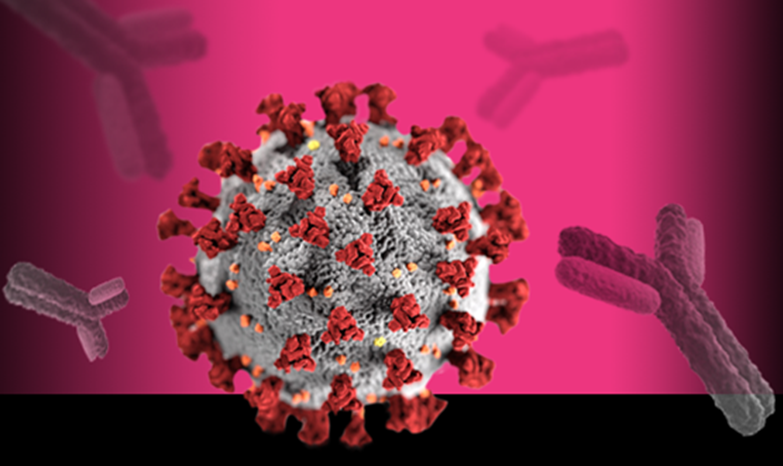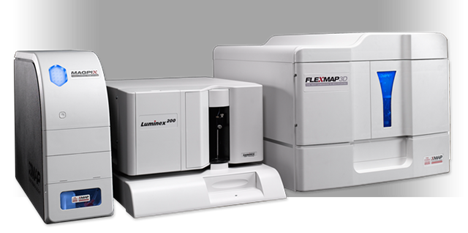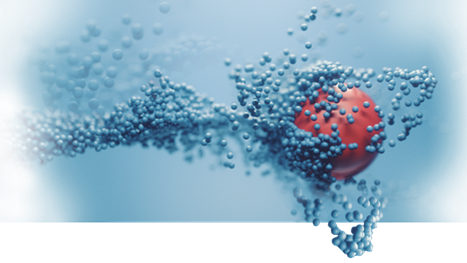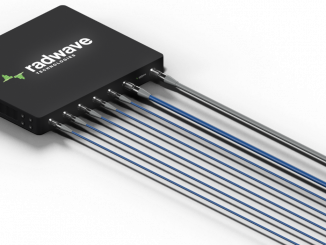
Your line of business can make a big difference in a pandemic. Just ask the makers of disinfecting wipes and vaccines, or companies like Luminex that make magnetic particles and diagnostic kits for health science laboratories, such as its high-volume 500-analyte assay depicted above.
Driven by growth from the global pandemic, Luminex revenues overall rose 35% in the third quarter of 2020 compared to the same period a year earlier, but its molecular diagnostics sector which encompasses magnetic particles and magnetic separations tools for laboratory analysis nearly doubled. Total revenue company-wide for the three months ended September 30 was $106 million while profitability, bolstered by 60% gross margins, was also higher. Its molecular diagnostics sector, however, jumped 98% to nearly $60 million in revenues.

Based in Austin, Texas, Luminex develops and manufactures proprietary biological testing technologies, with applications throughout the life-sciences industry. Among these are an extensive line of products that are based on magnetics technology, such as its high-volume 500-analyte assay depicted above. In response to the global outbreak of the novel coronavirus disease, Luminex has developed multiple solutions to enhance its offerings to automate and facilitate the detection of SARS-CoV-2 and COVID-19 research.
“I’m very pleased with the performance of our diversified business during these very challenging times,” said Nachum “Homi” Shamir, chairman, president and CEO. “Our team continues to execute on our key role in addressing the demands of this pandemic. With strong revenue growth, improved gross margins and continued control over operating expenses, we are seeing healthy profitability and cash flow.”
The boom in business will continue into 2021, he projected. “Based on our current estimates, we anticipate surpassing our $500 million annual revenue target much sooner than we previously expected, while continuing to build an outstanding company.”
As a high-throughput, more comprehensive option for high-complexity labs, the company developed its NxTAG CoV Extended Panel which can detect SARS-CoV-2 and has received emergency use authorization in the US and Canada. The panel is a qualitative, multiplex, nucleic acid test for the detection of SARS-CoV-2 in nasopharyngeal swab samples. Designed for use on the company’s MAGPIX instrument system, the panel detects three separate gene targets to ensure accurate, reliable results.

MAGPIX is the simplest, most affordable and compact of the company’s xMAP instruments. Optimized for handling magnetic particle assays, the compact multiplexing unit can perform up to 50 different tests in a single reaction volume and reads a 96-well plate in just 60 minutes, attributes appreciated by life science labs seeking faster methods for their analyses to meet the demands of Covid-19. It is designed as a simple and easy to use instrument with a smaller footprint.
The company’s xMAP beads come in a variety of formats including MagPlex which are magnetic and MicroPlex non-magnetic beads. The magnetic microspheres can measure up to 500 targets simultaneously enabling the development of assays which can measure up to 500 different analytes in the same well, as depicted in the image above. The magnetic beads are universally compatible with all xMAP Instruments.
Similar to the company’s other microspheres, the MagPlex beads are carboxylated polystyrene microparticles that have been dyed into spectrally distinct sets, or regions, allowing them to be individually identified by the instrument. The uniquely coded beads provide a user an addressable substrate on which to perform multiple bio-analytical reactions in a single well. In the instrument, the beads pass through a red laser which excites the internal dyes to distinguish the microsphere set. Then, a green laser excites the fluorescent reporter dye to determine the result of the assay.

Among the magnetic bead products are MagPlex-TAG microspheres that allow users to easily design a nucleic acid liquid bead array by hybridizing “TAGed” primers or probes to the surface of the beads. The particles are dyed into spectrally distinct sets, or regions, allowing them to be individually identified by an xMAP instrument. Each of the uniquely color-coded beads has a unique 24 base DNA sequence, called an “anti-TAG,” covalently coupled to its surface. Users can quickly and easily design custom bead arrays simply by adding a complementary “TAG” sequence to their primers or probes of interest and hybridizing those primers or probes to the anti-TAG sequences on the addressable microsphere.

Other magnetic beads from Luminex include its Avidin-coupled magnetic microspheres to characterize peptides or proteins. Avidin is a protein found in raw egg white. These beads are avidin-coupled paramagnetic microparticles that have been color coded into 100 spectrally distinct sets or regions. Each bead can be used as the substrate on which an assay can be performed. Because each of the beads is uniquely color coded, they can be quickly distinguished by an xMAP instrument, which allows interrogation of up to 100 different analytes simultaneously from a single sample.
There are several advantages to the magnetic particles over traditional ones. With the use of a magnetic separator, they can be separated from solution quickly and easily. This improves percent recovery during handling and wash steps and facilitates assay automation.
Luminex offers two magnetic separators, one is a plate separator and the other a tube separator. The plate separator is a modified plate magnet intended to separate a 96-well plate of MagPlex microspheres during assay preparation steps. The side clasps on this magnet have been specially designed to hold a round-bottom plate securely to the magnet, enabling the user to quickly decant it over a waste container.
The magnetic microspheres are typically produced in a concentration of 2.5 million and 12.5 million beads/ml and are packaged in 1 ml and 4 ml vials. The company makes two magnetic particle coupling kits for biomolecule assay development and bio-separation, one with bead sizes of 200nm and the other 1µm. For more info, see www.luminexcorp.com.



